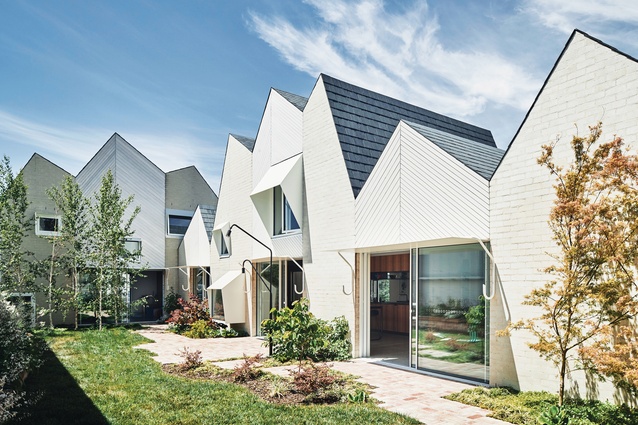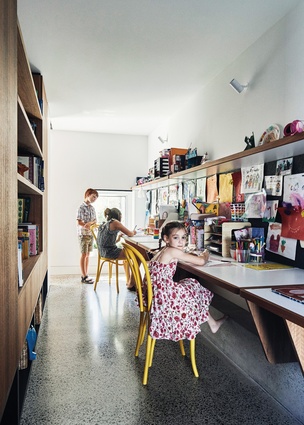Cacophony of roofs: Rae Rae House
Behind the heritage facade of two pre-existing Melbourne houses, this new home by Austin Maynard for a family of five strikes a balance between quietude and noise, between fun and functionality.
For most of my adult life I’ve avoided accruing things. Over the years, I’ve stifled the urge to collect books, furniture, clothing and cutlery, positing that there is a finite number of things that a person “needs.” There’s a certain piousness to this pursuit of nothingness, spurred on by the ethical dilemmas surrounding how things are made. The thing about things, though, is that regardless of how consciously you try to avoid them, they somehow manage to creep into your life.
More and more, when I visit people’s houses, it’s the way that “stuff” – collected over years and acting as a simulacrum of people and their experiences – is enmeshed with architecture that fascinates me. Rae Rae House by Austin Maynard Architects has been designed to move fluidly between support of and surrender to the stuff generated by a family of five. Paintbrushes, paper, Lego, computers (with their corresponding cords and chargers), pots and pans, toothpaste, laundry (both dirty and clean) are stowed at arm’s length in strategically placed pigeonholes, or on hooks, or tucked away into unexpected nooks and crannies that help bring order to life’s paraphernalia and its constant state of flux.
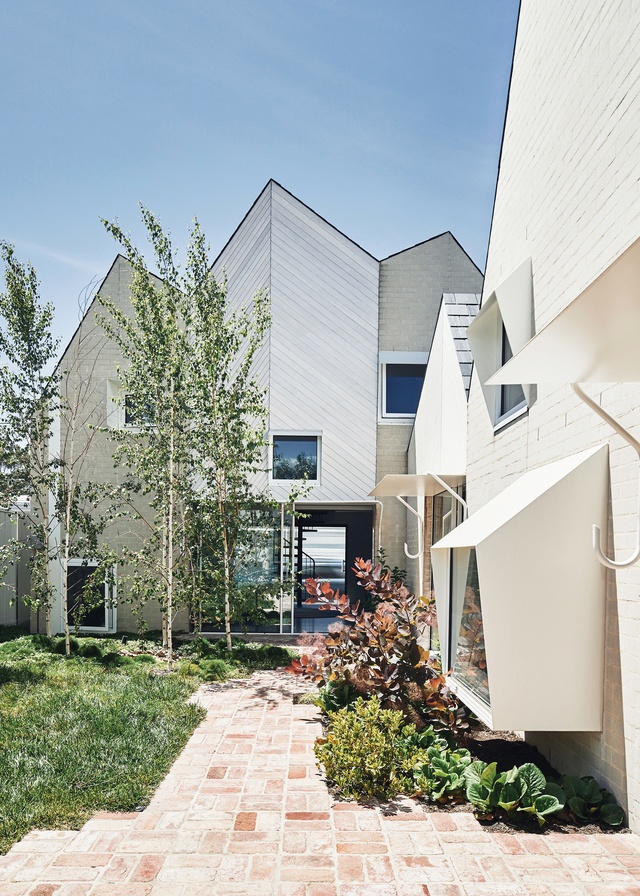
Responding to this ebb and flow, architects Mark Austin and Andrew Maynard have devised mechanisms throughout the home that allow for freedom and flexibility. Neat, timber-lined joinery in the dining room and kitchen holds multipurpose pantry, storage and laundry spaces. Sliding panels and operable walls mitigate otherwise lofty volumes, allowing spaces to be opened up to light, air and conversation across voids or closed down to contain the hum of activity into pockets.
This balance between quietude and noise is legible in the home’s outward appearance. Tucked behind two refurbished cottages that now serve as flexible office and guest quarters, the addition is a cacophony of pitched roofs, steel awnings and crisp eyelid-like window hoods. “The design is site-specific and owner-specific,” explains Andrew. “The roof form is a neighbourly mechanism that protects access to northern sun. In breaking down the form, we could also shorten the spans and get what seems like avant-garde architecture. But this is mostly built out of pine – there’s very little steel in this house, so it’s very economical.”
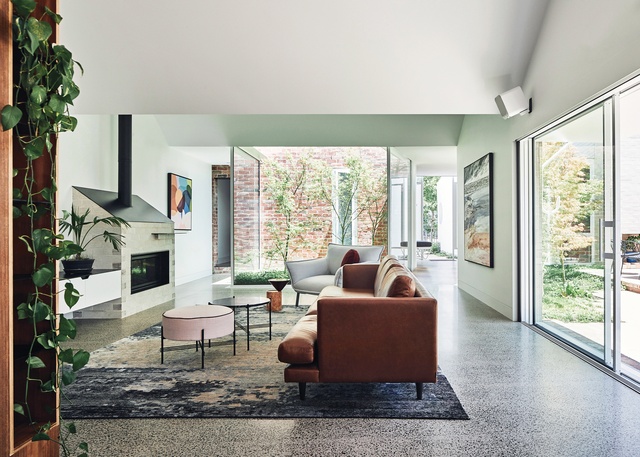
Like much of the work of Austin Maynard Architects, Rae Rae House is both playful and unexpected. At the same time, it is analytical and ordered, conceived and constructed with precision; there is no risk of naivety or clumsiness. “Designs want to get complex and messy and you’ve got to have the rigour then to pull it back,” says Mark. The ability to execute architecture that skirts the line between innovation and experimentalism so finely is born of two distinct yet complementary design minds at play. Throughout the design and construction process, Andrew and Mark handball big-picture ideas, design refinement and construction coordination back and forth. The result is houses that can support the dynamism of many generations.
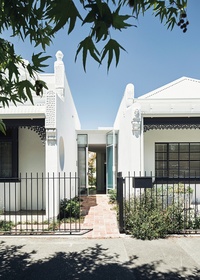
It’s an exciting idea that a home can be functional, sophisticated and stimulating. At Rae Rae House, the new architecture responds to its place without conforming. Leading by example, the plan of the house, configured with living spaces and bedrooms at the rear of the site, moves life onto the edge of an otherwise garage-fronted laneway. During the day, when the large sliding door is open, the lines of habitation become blurry and ripe with possibility for interaction, cheekiness and fun; during the evening, light emanates from the house, activating the streetscape in a generous and intimate way.
Enveloping the home is a garden that creates a beautiful tension between order and chaos. While the planting has been carefully designed and selected, there’s a sense that its natural unruliness has been invited to creep onto and stain the building. The shadows of tree trunks and leaves disrupt the clarity of the architectural form across the otherwise bright exterior.
The garden, which rambles into the house through a number of small courtyards, is an apt reminder of how a home should be occupied. It is the human condition to create disorder because, as a species, we are imaginative and we need tools, materials and stuff to make the things that enrich our lives. Our collections of things and happenstance acquisitions will shift and change with our interests, but skilfully designed architecture, such as Rae Rae House, can gently order it all in a way that supports a rewarding and vibrant existence.
This article was first published online at architectureau.com.

